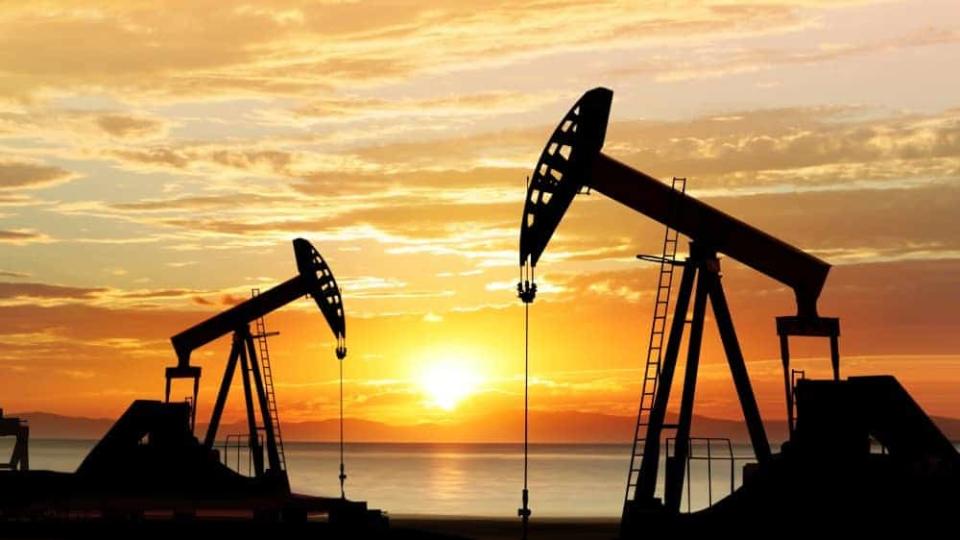A Disaster Is Unfolding in Canada’s Oil Patch

Canada’s oil crisis continues unabated, fueled by yet another oil price collapse. For the first time in 18 years, the North American West Texas Intermediate (WTI) benchmark slid below US$20 per barrel. Canadian benchmark oil prices have fallen even further. The Western Canadian Select (WCS) heavy crude benchmark has hit record lows. This sees WCS trading at around US$6 per barrel. At that price, it costs more for oil sands companies to extract bitumen and other forms of heavy oil than it is worth. Many Canadian oil companies, especially those operating in the oil sands, will be forced to shutter production. There is worse ahead for oil prices and the energy patch.
Weaker oil prices on the way
The global economic outlook continues to worsen with many economists claiming that a recession — as bad as, if not worse than, the 2008 Great Recession — is looming. This is because the coronavirus continues to spread, and it will be some time before society returns to normal. The progressive spread of the virus across the world has forced other governments to implement aggressive measures. These include travel bans, curfews, and other restrictions on non-essential movements and services.
That has sparked a sharp decline in consumption and business activity, which is weighing heavily on the economy. In turn, those measures have caused demand for oil to deteriorate significantly, which will eventually trigger a massive demand shock.
The harsh impact of that shock will be magnified by Saudi Arabia and Russia, which have embarked upon an oil price war. That will see markets, which are already under pressure from an existing massive supply glut and sharply deteriorating demand, flooded with oil. Riyadh claims it can boost oil output by up to 2.6 million barrels daily, while Moscow is seeking to add 400,000 barrels daily to its national production.
When that occurs, it will overwhelm global storage facilities causing oil prices to crash. This will be the ultimate catalyst that sends WTI to US$10 per barrel or even lower.
Growing crisis
Worse for the energy patch is that WCS trades at a discount to WTI. The price differential is currently at around US$14 per barrel, which means that if WTI falls to US$10 per barrel, WCS will be worthless.
Even more alarming is that Canadian oil storage has almost reached capacity. When it is full, the market will be flooded with WCS, causing the discount to deepen, pushing Canadian heavy oil even lower. That will force many Canadian oil companies to shutter heavy oil operations, suspending large portions of their production.
It will kindle a round of bankruptcies, because many Canadian oil companies are weighed down by burdensome levels of debt. As oil prices continue their downward trajectory and production is shuttered, many will be unable to generate the free cash flow required to service and repay that debt.
Heavily indebted companies are the most vulnerable
One of the most vulnerable is MEG Energy (TSX:MEG). Its flagship asset is the Christina Lake steam assisted gravity drainage project. MEG ended 2019 with net debt of $2.9 billion, which is a worrying four times annual adjusted funds flow and three times EBITDA.
During 2019, it cost MEG just over $16 per barrel to extract, store, blend, and transport the heavy oil produced. That means in an operating environment where WCS is trading at around $8.60 per barrel, MEG will operate at a steep loss.
MEG is facing considerable financial pressure. Unlike other heavy oil producers, it can’t shutter individual assets. MEG also has two near-term maturities of US$800 million in 2023 and US$1 billion in 2024. If there is no oil recovery, MEG won’t enough free cash flow to meet its financial obligations. The dependence on Christina Lake and lack of other assets means that MEG can’t readily sell properties to raise capital. This makes it difficult for the company to cover any financial shortfall.
The post A Disaster Is Unfolding in Canada’s Oil Patch appeared first on The Motley Fool Canada.
More reading
CRA Emergency Measures: No Financial Hardship for Taxpayers in 2020
Market Crash: How TFSA Investors Can Turn $10,000 Into $200,000 in 20 Years
Fool contributor Matt Smith has no position in any of the stocks mentioned.
The Motley Fool’s purpose is to help the world invest, better. Click here now for your free subscription to Take Stock, The Motley Fool Canada’s free investing newsletter. Packed with stock ideas and investing advice, it is essential reading for anyone looking to build and grow their wealth in the years ahead. Motley Fool Canada 2020

 Yahoo Finance
Yahoo Finance 